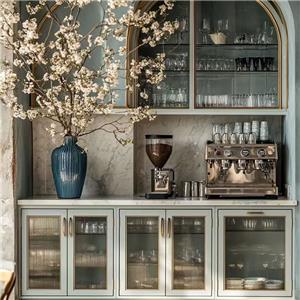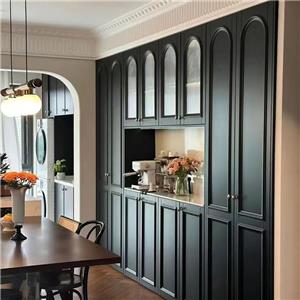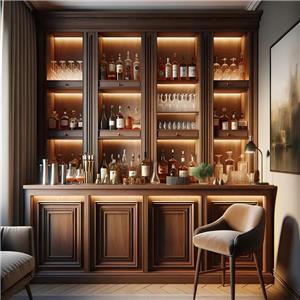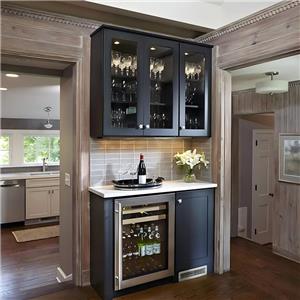Introduction to Imported Timber Species for Solid Wood cabinets
Introduction to Imported Timber Species for Solid Wood cabinets
Solid wood cabinets are crafted using natural timber sourced from forests, primarily including species such as teak, rosewood, red oak, and meranti, as well as materials like sapele and mahogany. These woods undergo processing to create the final product. The most distinctive feature of solid wood doors is that all components are made from the same material, without any fillers. They are meticulously crafted from carefully selected natural imported timber.
The selection of timber for solid wood cabinets is a stringent process, as not all types of wood meet the specific material requirements. Timber with inferior properties is unsuitable for crafting solid wood cabinets. Therefore, high-quality hardwood is typically chosen for manufacturing, making these cabinets or doors relatively expensive.
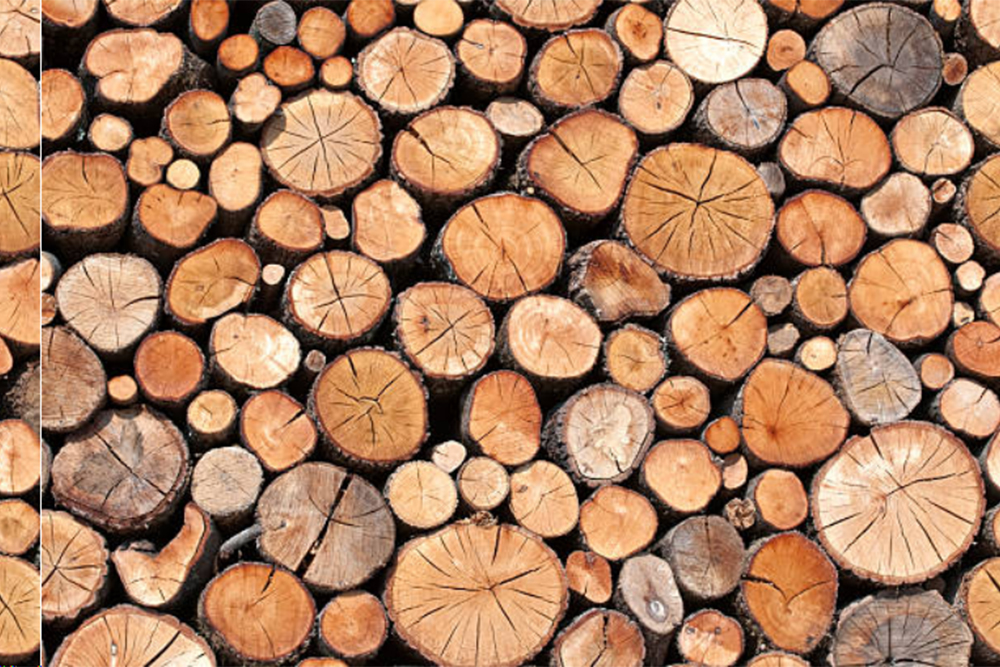
Rarity: Solid wood cabinets are crafted using selected natural and precious wood materials, including walnut, cherry wood, rosewood, teak, meranti, and more. The key feature is that all components of the cabinets are made from the same tree species, both internally and externally, without any fillers.
Naturalness: In today's highly technologically advanced world, synthetic materials are becoming more common, while natural materials are increasingly scarce. With growing environmental and self-protection awareness, the naturalness of solid wood cabinets has become a fashionable and highly valued characteristic.
Elegance: This refers to the use of precious tree species and meticulous craftsmanship in the production of solid wood cabinets and doors. The wood used in making these cabinets and doors is typically from valuable tree species with excellent characteristics, providing a rich texture and aesthetic appeal. The higher cost of materials also promotes increased precision in the manufacturing process, enhancing its ornamental value.
Environmental Friendliness: Solid wood products have certain advantages in terms of environmental friendliness. These cabinets are considered green and eco-friendly products, as they use minimal adhesives during the manufacturing process, resulting in formaldehyde levels far below national standards. Despite being relatively expensive, these doors are a natural, pollution-free choice, meeting the modern urban dweller's desire for a connection with nature.
Functionality: Experts emphasize that the soundproofing effectiveness of a door depends largely on its door core. Among the various door styles available, solid wood doors offer superior soundproofing due to their high density, weight, and thick door panels.
Disassembly Capability: Modern solid wood doors use a modular assembly process. After woodworking is complete, multiple layers of paint are applied, followed by assembly and a protective topcoat. This approach allows for the creation of expansion joints at the joints, preventing deformation caused by temperature changes. Additionally, it facilitates the complete disassembly and reassembly of solid wood doors.
Due to these characteristics, solid wood cabinets or furniture are often several times more expensive than other types of doors and have significant appreciation potential.
Burmese Teak Wood:
Teak wood, acclaimed as the "king of woods," is considered a precious material worldwide, with Burmese teak being the highest quality. Teak is the only wood that can endure immersion in seawater and exposure to sunlight without warping or cracking. It exhibits excellent stability, and after professional drying, its dimensions remain steady, making it the wood with the least deformation due to drying and swelling.
Teak is a highly premium deciduous hardwood, known for its exceptional stability and ease of processing. It is relatively expensive, takes about 50 years to mature, has high hardness, and is resistant to wear.
Color: The polished surface of Burmese teak oxidizes through photosynthesis, transforming into a brown or golden hue. Over time, the color becomes even more vibrant, a unique characteristic not found in other wood species.
Grain Patterns: Burmese teak, mostly sourced from pristine forests with a minimum age of 50 years, displays distinctive natural patterns. The polished surface reveals beautiful features such as ink lines, straight grains, mountain patterns, or uniform patterns.
Odor: Burmese teak continues to emit a natural and pure fragrance, acting as a natural insect repellent. This unique aroma provides insect and termite resistance, a feature not present in other tree species. Processed teak may have a subtle odor initially due to surface coatings, but over time, the fragrance permeates the air, creating a refreshing and natural atmosphere.
Touch: The surface of Burmese teak is exceptionally smooth and feels delicate, as if it has been soaked in oil. When freshly cut, rubbing it with hands releases an oily texture, resulting in a progressively smoother feel.
Rich in Iron and Oils - Acts as a Snake, Insect, Rodent, and Ant Repellent.
These characteristics contribute to the high value of Burmese teak wood, making it a prized choice for various applications.
Congo Sapele Wood:
Sapele, also known as Red Shadow Wood or African Mahogany, is one of the world's three precious woods and is considered a superior material for furniture and doors. It is primarily imported due to the absence of domestic sources, making it relatively expensive. Sapele is resistant to corrosion, has high strength, and originates from tropical regions in Africa. Its advantages include fine and uniform patterns, a glossy finish when clear-coated, a softer and more subdued appearance with a matte finish, high wood hardness, strong stability, clear grain, a sparkling and three-dimensional texture, providing a luxurious and elegant feel. It is considered one of the most fashionable wood materials for doors today.
Sapele has a fine and dense texture, making it resistant to water absorption. Doors made from Sapele exhibit excellent moisture resistance and, to some extent, offer good soundproofing effects. To enhance protection, a layer of clear coating is applied to the surface, preserving aesthetics while increasing the door's resistance to corrosion and strength. Known for its good flexibility, Sapele allows for easy shaping, contributing to the creation of various door styles in the market, including European-style doors and classical Chinese doors. These doors, with their high quality, cater to consumers with noble status, and some doors can be customized with different carvings, adding a finishing touch.
Brazilian Rosewood (Brazilian Rosewood):
In the market, "Antiaris Toxicaria" is commonly referred to as "Brazilian Rosewood," although it doesn't exclusively come from Brazil; its primary sources include Gabon and Cameroon in Africa. The terms "Brazilian Rosewood" and "Ba Hua" are colloquial names used in the market. Brazilian Rosewood is widely used and regarded as a precious wood due to the attractive name "Rosewood." While it does not belong to the true rosewood family, it possesses excellent properties and distinctive grain patterns, making it relatively expensive.
The heartwood of Brazilian Rosewood is reddish-brown with dark stripes, displaying a glossy surface and no distinctive odor. It is hard, heavy, and has high strength, forming unique and beautiful patterns through its inherent stripes and interlocking grain. This contributes to its high decorative value.
Due to the scarcity of Rosewood and the high quality of products made from it, the prices tend to be higher. The superior quality of Brazilian Rosewood, apart from market factors, makes it an excellent wood species with high preservation value.
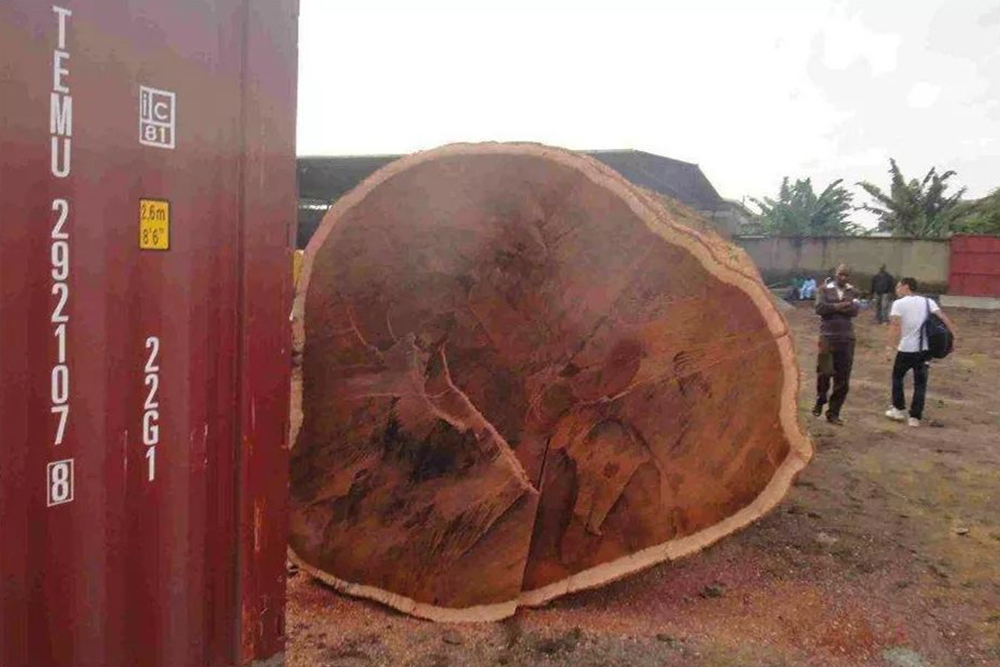
Advantages: Rosewood has several notable advantages, including:
Low Susceptibility to Drying: Rosewood is less prone to drying, and there is a significant difference in shrinkage between the sapwood and heartwood.
Corrosion and Friction Resistance: It exhibits resistance to corrosion and is highly resistant to friction.
Strong Nail Holding Capability: Rosewood has a strong grip for nails, ensuring durability in construction.
Excellent Mechanical Strength: It possesses impressive mechanical strength, contributing to the overall robustness of structures.
Ease of Carving and Processing: Rosewood is easily carved and processed, allowing for intricate designs and smooth surfaces.
Smooth Surface Finish: The wood provides a smooth surface finish after processing.
Good Adhesion and Coating Properties: It demonstrates good adhesion for gluing and has excellent coating properties.
Corrosion Resistance: Rosewood is resistant to corrosion, ensuring longevity.
Friction Resistance: The wood is resistant to friction, maintaining its quality over time.
Sturdy Overall Structure: It contributes to a sturdy overall structure, and intricate carving patterns are executed with precision.
Durable Paint Finish: Rosewood maintains a durable paint finish, preventing easy peeling or chipping.
Resistance to Color Changes: It is less prone to color changes, preserving its aesthetic appeal.
High Collectible Value: Due to its unique qualities and scarcity, rosewood holds high collectible value.
These characteristics make rosewood a preferred choice for various applications, combining both functional and aesthetic benefits.

